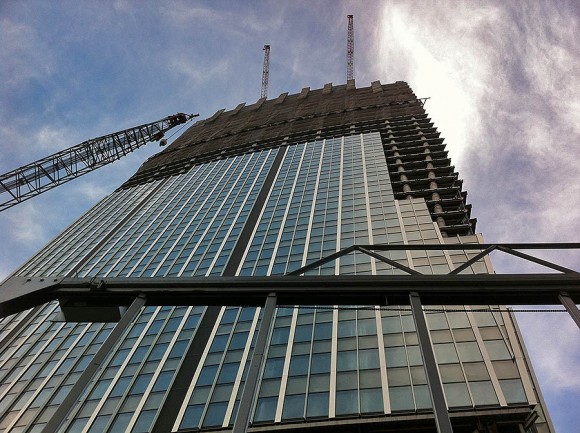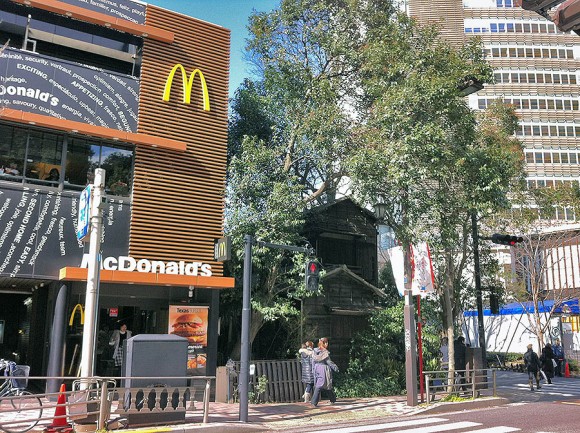One highlight of our recent trip to Dresden was the visit of the Militärhistorische Museum, the military history museum of the German Army, the Bundeswehr. It recently underwent a dramatic modernisation using the designs of starchitect Daniel Libeskind and re-opened its doors in 2011 amid much fanfare. The striking shard-like structure symbolises the Allied bombing squads’ formation that put to ashes large parts of Dresden in 1945.
Category Archives: Architecture
L40 / Rosa-Luxemburg-Platz
Berlin’s Rosa-Luxemburg-Platz is one of my favourite urban spots. Here, Berlin’s history comes alive like hardly anywhere else. Buildings from several decades stand together where important historical events took place. Meanwhile, new houses are being built. Like the one in Linienstrasse 40, German architect Roger Bundschuh’s strange synthesis between art and architecture.
Danchi
A friend of a friend is a researcher on Japanese public housing projects. Their history is inextricably linked to Japan’s economic miracle from the 1950s onwards. When researching the book, I thought that the chapter on urbanisation would benefit greatly from an inset about danchi.
Pirnaischer Platz Dresden
I just got back from a short trip to Dresden. My parents treated us to the hotel, so we had to go with their choice of location in the fringes of the renovated old town. It proved to be a decent place and took us past the very interesting Pirnaischer Platz each day. Here, two buildings stood out, necessitating some further research.
Komazawa Olympic Park
The Tokyo Olympics 1964 have been a recurring theme on this blog (here and here) because they fit in so nicely with the narrative of Japan’s economic miracle and reintegration into the world community. Another architectural manifestation from the Games is the Komazawa Olympic Park in Setagaya. The author of the book’s chapter on politics and avantgarde has chosen the complex as one of the insets. I took a stroll through the park to get a feel for the place.
City views
Today I climbed Atago Forest Tower’s sky deck for the views. Unfortunately, it was a little too bright and hazy towards the south west, where a lot of nice buildings are.
Towards Shinagawa, Tokyo Tower.
Toranomon Hills
Just down the road from where I live (until Wednesday!), a building has been rising to the sky relentlessly, floor by floor since we arrived in Tokyo five months ago. On 1 March, a press release revealed (to me at least) what this is all about: it’s Mori’s new mega-project, now officially christened Toranomon Hills after the area it is situated in. It is the developer’s largest since Roppongi Hills got opened ten years ago and at the heart of the whole area’s redevelopment.
Tokyo map of 60s/70s buildings
Work in progress… a geographical representation of the buildings discussed on this blog to date:
View 60s/70s buildings of Tokyo in a larger map
Yanaka strolls
Taking the south exit of Nippori station, you reach the neighbourhood of Yanaka. Many of the area’s buildings survived both the Kanto Earthquake and the carpet bombing of WWII. Walking the small streets, you get a feel for how Tokyo must have looked like a long time ago.
Old houses refuse to go
Despite the constant scrap and build here in Tokyo, you can find old “normal” buildings here and there. They do look out of place very often, like this one here in Akasaka, right in the centre of town near the government district. Situated next to a McDonald’s, one can only speculate as to what happened (or didn’t) to the wooden building or its owners.








